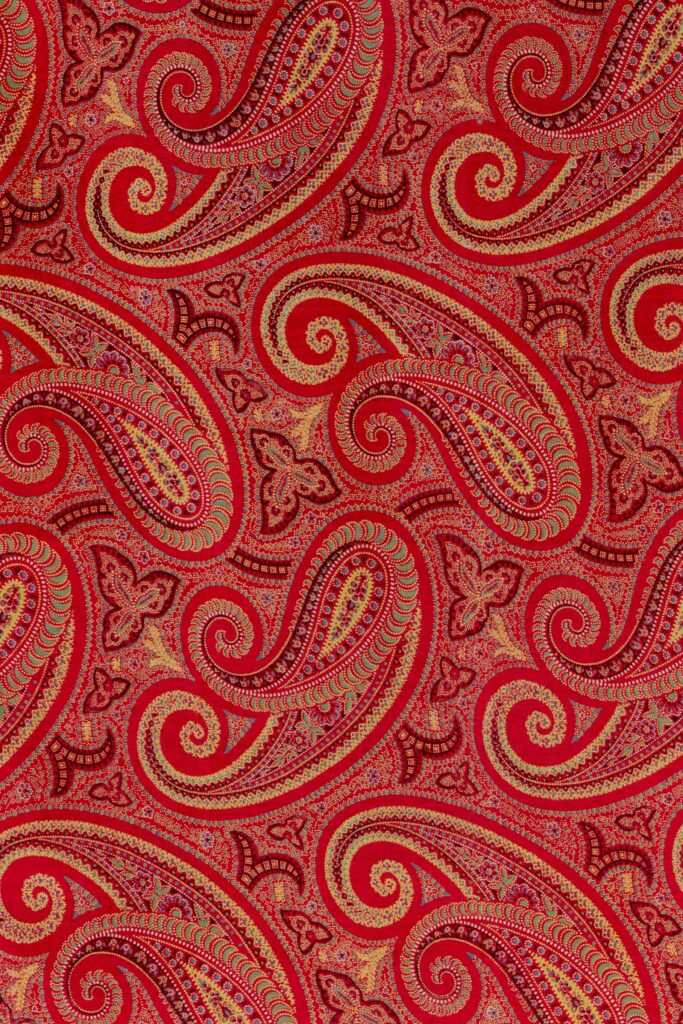Modest Fashion with Olive High School & Burnley Boys and Girls Club
1
“Modest Fashion is all about grace, confidence and comfort.”
Amina Abid, workshop participant
In Spring 2023 Gawthorpe Textiles Collection worked with Olive High School and Burnley Boys and Girls Club to deliver a project about modest clothing linked to the heritage textiles held in the Gawthorpe Textiles Collection. The brief was for the Olive High students to develop design drawings for modest sportswear. The aim of this project was to bring members of the Gawthorpe Textiles Collection (GTC) team in to school to work with a group of creative young people who would not normally be given this opportunity until they were in higher education. Using the expertise of the GTC staff we explored the idea of modest clothing, both historical and contemporary. The participants got the opportunity to see examples of modest clothing from the collection and discuss ways that clothing was made to be modest in historical times.


The young people felt that it is often difficult to keep their traditional values at school. Some subjects, especially sports, become restrictive for girls when wearing a traditional head scarf and modest clothing. They were challenged to develop design ideas for modest sportswear which would enhance and support them to achieve more in their physical exercise in comfort and with freedom of movement but still with modesty and secure coverage. “Modest fashion is covering yourself. It makes you feel more comfortable. And may make you look more respectable.” Manahil Faisal (participant). Textiles in the collection inspired and informed the design development. They saw examples of contemporary modest fashion collections created by students of the BA (Hons) Fashion Design course at the University of Central Lancashire.
The participants also worked with Zainab Faisal, a modest fashion designer who introduced the idea of modest athleisure to the group. The students researched modest clothing on Pinterest and Instagram. They wrote down some ideas about modest sportswear and developed their own design ideas for modest sportswear and athleisure. Examples of the students’ work is included in this exhibition. “I really enjoyed designing sportswear that covers the body – making people feel modest, at the same time, have fun playing their favourite sport.” Manahil Faisal (participant).
Thanks to Olive High School students: Alima Abid, Muslimah Alam, Mariam Ehsan, Manahil Faisal, Syeda Ilma, Hana Khan, Zara Khan, Alisha Shaffi, & Sarwat Yasmeen.
Olive High School staff
Burnley Boys and Girls Club: Afzal Khan and Zainab Faisal, Modest Fashion Designer
Amanda Odlin, University of Central Lancashire Fashion
Click the buttons below to view pdf versions of two presentations about modest fashion.
Modest Fashion at UCLan. A quick look at some of the success stories from UCLan Fashion Design students who focused on Modest Fashion Design.
Modest Fashion presentation by Zainab Faisal.
Modest sportswear should be comfortable and easy to move in, and appropriate for specific activities whilst retaining dignity, privacy and modesty for the wearer. The key feature is that the clothes should not be figure hugging, or too revealing. Think high necklines, baggy tops and trousers and hair covering. Women want to dress modestly for different reasons, religious, cultural, practical, or simply for personal reasons of comfort.
Whatever the reason, the rising interest in modest fashion means that it is becoming more accessible and young women are demanding access to modest clothing at a reasonable price in every part of their lives.
The challenge faced by many Muslim women is finding sportswear that is both functional and fashionable, adheres to modesty codes and is appropriate for public gyms and mixed-gender fitness spaces.
According to the UAE-based modest activewear label Unbound 76% of women feel uncomfortable working out in their existing gym clothes, and 91% of modest women feel a lack of options in modest active wear. https://www.instagram.com/unbound_ae/related_profiles/ After all, mainstream options mainly consist of skin-tight leggings or cycling shorts, paired with sports bras or cropped tops, which many Muslim women find too revealing.
“It’s hard being a Muslim woman who works out,” explains Misbah Mogradia, the founder of UK-based label Imaan Active. “The constant worry of revealing your body while performing exercises can really hinder your performance or prevent you from participating altogether.” https://hyphenonline.com/2023/01/17/modest-sportswear-for-muslim-women-can-be-stylish/
Date: c.1840-1860
Origin: India
Dimensions: H 36cm x W 43cm
A chemisette was a dress accessory that could be worn under the bodice of a dress to add more coverage to the neckline but was often a way of adding decoration too. Using a chemisette was a quick and easy way of transforming a bodice with a lower neckline more suitable for evening wear into something acceptable as day wear. They were usually made of fine cotton muslin, voile or lawn and ranged from simple styles that borrowed the look of a masculine shirt to much more elaborately decorated examples covered in embroidery, lace and frills.
This example is made of cotton muslin and is simple in shape but features fine floral whitework embroidery, possibly worked in India.
In this close up the finely stitched whitework embroidery down the front of the chemisette can be seen. The embroidery shows stylised flowers and leaves joined by thin meandering stems and is worked in padded satin stitch and stem stitch along with whipped eyelets and needle lace fillings. The centre front edge has been carefully finished with a scalloped edging worked in buttonhole stitches.
Date: c.1850 – 1865
Origin: Great Britain
Dimensions: W 17cm x L 42cm
In the mid 19th century, fashionable Victorian dresses started to feature sleeves that had wider and wider lower sections. Some had fitted cuffs at the wrist but other were open at the wrist, exposing the wearer’s arm from the elbow down. While this was acceptable for evening wear, during the day a ‘false sleeve’ like this would be worn to cover the lower half of the arm and creating a more modest look. Like many other similar accessories these were often made of fine cotton lawn or muslin and could be decorated in many ways.
One of the most popular types of decoration was broderie anglaise; a type of embroidery where handsewn eyelets were arranged to create elaborate patterns.
This close up shows the fitted band of the cuff where leaf shaped eyelets have worked very close together and arranged into a geometric layout.
This frilled edging to the cuff was designed to hang down over the wearer’s hand rather than be turned back. Here we can see the inside and the back of the embroidery, showing how neat it is even on the ‘wrong’ side. The broderie anglaise here features teardrop shaped eyelets arranged into a pattern of repeating Paisley motifs inspired by the boteh or buta motifs found in Indian shawls and embroideries. Extra details have been added in with stem and satin stitch.
“This project was designed to create a design for modest wear. I chose casual wear. I did this design because I thought it would look stylish whilst covering yourself. The colours I used were dark blue and black. I used stripes to make it stand out. What makes it modest is that the top is long and flowy, and the pants are quite baggy.”
Marian Ehsam, workshop participant
“My design is for any sport like running. I did these designs because I like modest sportswear. My design is a long grey skirt that goes up to the knees. It has sleaves that reach to the elbows and is loose, not tight. The blue pants are loose and comfortable as the material used will be silky and not thick but not too thin either. The headscarf is blue and covers the neck and hair. What makes my design modest is that it covers the body as well as it is comfortable. The clothes are loose and fashionable at the same time.”
Sarwat Yasmeen, workshop participant
“During the past few weeks, we have been designing modest sportswear. We believe that it is important to feel confident but also dignified in what you wear. We met these lovely visitors that helped us to design some modest sportswear. It has been a lot of fun, looking at and exploring new things. Rachel Midgley (GTC curator) brought in beautiful, embroidered clothing from the past (samples from the Gawthorpe Textiles Collection) and talked to us about it. We learned that in the past, women dressed really modestly, and they covered up their bodies. We enjoyed creating new designs and learning about the different ideas and views about modest fashion.”
Syeda Ilma, workshop participant
“Until the Gawthorpe team first introduced us Olive High School girls to heritage textiles and modest fashion, I did not think that modest fashion was positively promoted to the world. What I learned during the few weeks we had to work on the project is that modesty isn’t about covering up our bodies because they are bad – modesty isn’t about hiding ourselves – in fact, it is about revealing our dignity. Modest fashion can be elegant, timid, voguish, and virtuous. It was amazing to express our point of view about modest fashion. Hopefully, in the future, I would love to work with the Gawthorpe Textiles Collection to show my side of modest fashion.”
Hana Khan, workshop participant
“During this project we looked at different art designs and textiles. We were shown many designs from the collection, and I was very inspired by them, which allowed me to create my designs and express my own ideas of modest fashion and sportswear more easily. I learned about the history of embroidery and the origin and beginnings of Gawthorpe Textiles Collection. I enjoyed looking at the delicate pieces of clothing that were worn by people in the past, and getting to know more about how they were worn and adapted to trends and changes of attitudes in the past. I enjoyed creating the designs, deciding the colour schemes and designing the appearance of each of the modest sportswear clothing pieces.”
Amina Abid, workshop participant
“When Gawthorpe Textiles Collection first came in I didn’t know much about textiles and modest fashion, but they showed us about modest fashion and guided us. We designed and coloured some ideas for modest fashion. Rachel Midgley (GTC curator) came in and showed us some old, embroidered clothes and examples of 19thC modest fashion. It was really fun. We learned so many new things including about Rachel Kay Shuttleworth, the founder of GTC and how she made, borrowed or was given items for her collection. I enjoyed drawing and learning about historical clothes, and it was really fun looking at them. Modest fashion is for everyone. It isn’t to cover your body or skin. Modest fashion is to feel comfortable.”
Muslimah Alum, workshop participant
“Modest fashion is covering yourself. It makes you feel more comfortable. And may make you look more respectable. I really enjoyed designing sportswear that covers the body – making people feel modest, at the same time, have fun playing their favourite sport.”
Manahil Faisal, workshop participant
Related

Cloth Cultures Season 2
Join Fashion Historian Amber Butchart for a series of podcasts showcasing some amazing objects from six different Lancashire museums and collections.
View item
Ringing the Changes
Community Curator Anne Cochrane explores the entries in a telephone index from Queen Street Mill; revealing both local and international links within the textile industry.
View item
Turkey Red & Khaki at Elmfield Hall
Exploring the connections between two iconic dyes and the story of William Gatty and his home; Elmfield Hall in Accrington.
View item
Skilled, Responsible & Hardworking
Academic research by Gill Crawshaw focusing on the stories of Lancashire's disabled cotton workers.
View item




















Comments
(1 comment)
tabbzz
We were able to see such ancient artefacts that we ourselves felt very honoured to be able to feel and see how they were after more than 100 years ago . Rachel came in and she was the one who showed us all of these important objects. And it was a very fun experience to see all of the embroidery. by Muslimah and Zara <3
Leave a comment
You must be logged in to post a comment.